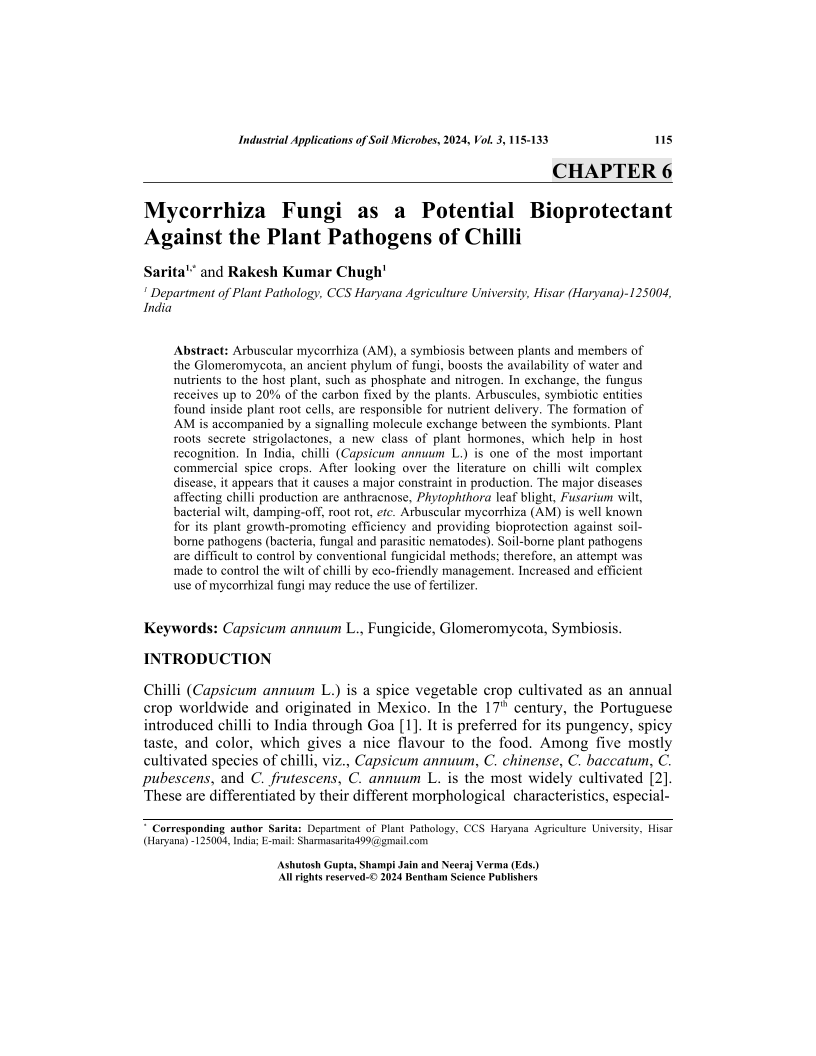Mycorrhiza Fungi as a Potential Bioprotectant Against the Plant Pathogens of Chilli

- Authors: Sarita1, Rakesh Kumar Chugh2
-
View Affiliations Hide AffiliationsAffiliations: 1 Department of Plant Pathology, CCS Haryana Agriculture University, Hisar (Haryana) 125004, India 2 Department of Plant Pathology, CCS Haryana Agriculture University, Hisar (Haryana)-125004, India
- Source: Industrial Applications of Soil Microbes , pp 115-133
- Publication Date: April 2024
- Language: English
Mycorrhiza Fungi as a Potential Bioprotectant Against the Plant Pathogens of Chilli, Page 1 of 1
< Previous page | Next page > /docserver/preview/fulltext/9789815079753/chapter-6-1.gif
Arbuscular mycorrhiza (AM), a symbiosis between plants and members of the Glomeromycota, an ancient phylum of fungi, boosts the availability of water and nutrients to the host plant, such as phosphate and nitrogen. In exchange, the fungus receives up to 20% of the carbon fixed by the plants. Arbuscules, symbiotic entities found inside plant root cells, are responsible for nutrient delivery. The formation of AM is accompanied by a signalling molecule exchange between the symbionts. Plant roots secrete strigolactones, a new class of plant hormones, which help in host recognition. In India, chilli (Capsicum annuum L.) is one of the most important commercial spice crops. After looking over the literature on chilli wilt complex disease, it appears that it causes a major constraint in production. The major diseases affecting chilli production are anthracnose, Phytophthora leaf blight, Fusarium wilt, bacterial wilt, damping-off, root rot, etc. Arbuscular mycorrhiza (AM) is well known for its plant growth-promoting efficiency and providing bioprotection against soilborne pathogens (bacteria, fungal and parasitic nematodes). Soil-borne plant pathogens are difficult to control by conventional fungicidal methods; therefore, an attempt was made to control the wilt of chilli by eco-friendly management. Increased and efficient use of mycorrhizal fungi may reduce the use of fertilizer.
-
From This Site
/content/books/9789815079753.chapter-6dcterms_subject,pub_keyword-contentType:Journal105

